Skip to main content
Emil Bisttram
1895–1976
BirthplaceHungary
Death placeTaos, New Mexico, United States of America
BiographyEmil Bisttram (originally Bistran) was an influential member of the twentieth-century modernist artists' community that flourished in the New Mexico village of Taos. Bisttram was born in Hungary and immigrated to the United States with his family as a boy. Growing up in the poor tenement district of New York City's Lower East Side, he left school with an eighth-grade education. He eventually found work as a commercial artist and by the age of twenty was running his own commercial art agency while studying art in the evenings at various schools. At the Parsons School of Art and Design, he worked under Jay Hambidge (1867–1924) and was deeply influenced by his theory of dynamic symmetry, which posited ideal geometric relationships manifest in both nature and art. Bisttram began teaching at Parsons and then also at the Master Institute of United Arts, founded in 1921 by Russian mystical artist Nicholas Roerich (1874–1947). Throughout the 1920s, Bisttram worked in a largely representational manner and exhibited his watercolors widely, wining several awards.
Bisttram first visited Taos in 1930. Following a year of study under the great Mexican mural-painter Diego Rivera (1886–1957) funded by a Guggenheim fellowship, Bisttram returned to Taos to live there permanently. He opened the Heptagon Gallery, thought to be the town's first commercial gallery, and founded the Taos School of Art, serving as its director until the end of his life. Later, Bisttram also taught seasonal classes in Phoenix, Arizona, and in Los Angeles.
Bisttram's figural works and landscapes were made both in a realist manner consistent with his background in commercial work and in a more modernist style of simplified, stylized forms influenced by Rivera and by Roerich. In the 1930s, he also began creating completely non-objective compositions. Rejecting the stimulation of purely aesthetic response as a basis for abstraction, Bisttram aspired to give pictorial form to universal spiritual truths in the manner of Russian non-objective artist Vassily Kandinsky (1866–1944). In 1938, Bisttram and fellow New Mexico modernist Raymond Jonson (1891–1982) co-founded the Transcendental Painting Group in Santa Fe dedicated to the spiritual purpose of nonrepresentational painting. Around the same time, Bisttram began painting murals in a representational manner consistent with the populist aims of the Depression-era federal arts relief projects that sponsored them. Bisttram's ability to work in a variety of styles concurrently was undoubtedly a factor in his success. He was honored with one-person exhibitions at several conservative regional art museums, but he also exhibited at the Museum of Non-Objective Art (later renamed the Solomon R. Guggenheim Museum) in New York.
Bisttram remained a mainstay of the Taos artists' community. In 1953 he was a co-founder of the Taos Art Association, an organization aimed to support local artists and to promote the town as a regional art center, and he remained active as a teacher until 1965. He died at age eighty-one much honored for his contributions to New Mexico's artistic life.
Bisttram first visited Taos in 1930. Following a year of study under the great Mexican mural-painter Diego Rivera (1886–1957) funded by a Guggenheim fellowship, Bisttram returned to Taos to live there permanently. He opened the Heptagon Gallery, thought to be the town's first commercial gallery, and founded the Taos School of Art, serving as its director until the end of his life. Later, Bisttram also taught seasonal classes in Phoenix, Arizona, and in Los Angeles.
Bisttram's figural works and landscapes were made both in a realist manner consistent with his background in commercial work and in a more modernist style of simplified, stylized forms influenced by Rivera and by Roerich. In the 1930s, he also began creating completely non-objective compositions. Rejecting the stimulation of purely aesthetic response as a basis for abstraction, Bisttram aspired to give pictorial form to universal spiritual truths in the manner of Russian non-objective artist Vassily Kandinsky (1866–1944). In 1938, Bisttram and fellow New Mexico modernist Raymond Jonson (1891–1982) co-founded the Transcendental Painting Group in Santa Fe dedicated to the spiritual purpose of nonrepresentational painting. Around the same time, Bisttram began painting murals in a representational manner consistent with the populist aims of the Depression-era federal arts relief projects that sponsored them. Bisttram's ability to work in a variety of styles concurrently was undoubtedly a factor in his success. He was honored with one-person exhibitions at several conservative regional art museums, but he also exhibited at the Museum of Non-Objective Art (later renamed the Solomon R. Guggenheim Museum) in New York.
Bisttram remained a mainstay of the Taos artists' community. In 1953 he was a co-founder of the Taos Art Association, an organization aimed to support local artists and to promote the town as a regional art center, and he remained active as a teacher until 1965. He died at age eighty-one much honored for his contributions to New Mexico's artistic life.

